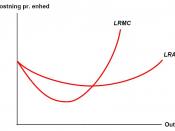�PAGE � �PAGE �1� CV and P Formulas
Cost, Volume and Profit
September 19, 2008
�
Cost, Volume and Profit
The basic components of cost-volume profit analysis are:
Volume or level of activity: The amount of output or sales
Unit selling price: This is the price the firm assigns for selling its products
Variable cost per unit: Those are costs that stay fixed on a per unit basis, but change in total with different levels of activity.
Total Fixed Costs. Those are fixed in total, but vary on a per unit basis depending on the level of activity.
Sales Mix: The relative percentage in which each product is sold when a company sells more than one product.
Unit Contribution Margin = Unit Sales Price - Unit Variable Cost
Based on the above formula, the Unit Contribution Margin (UCM) increases when the Sales Price increases.
For example: If a company is selling a product at a sales price of $10 per unit, and the variable cost per unit is $4, then the contribution margin would be ($10 - $4) = $6.
If the sales price increases to $12, then the contribution margin would equal ($12 - $4) - $8 per unit.
Breakeven Sales is defined as the level of sales that would cover all Variable and Fixed Costs resulting in a zero profit for the company.
The Breakeven point in unit sales =
Therefore, if the Fixed Costs are $15,000, and the Unit Contribution Margin is $5, then the Breakeven point = $15,000 ÷ $5 = 3,000 units. If Fixed Costs decrease to $10,000, then the breakeven point in unit sales = $10,000 ÷ $5 = 2,000 units.
Contribution Margin Ratio is the contribution margin per unit divided by the unit selling price.
If originally a company is selling...


